M6.5 solar flare erupts from AR 3576, G2 – Moderate geomagnetic storm watch
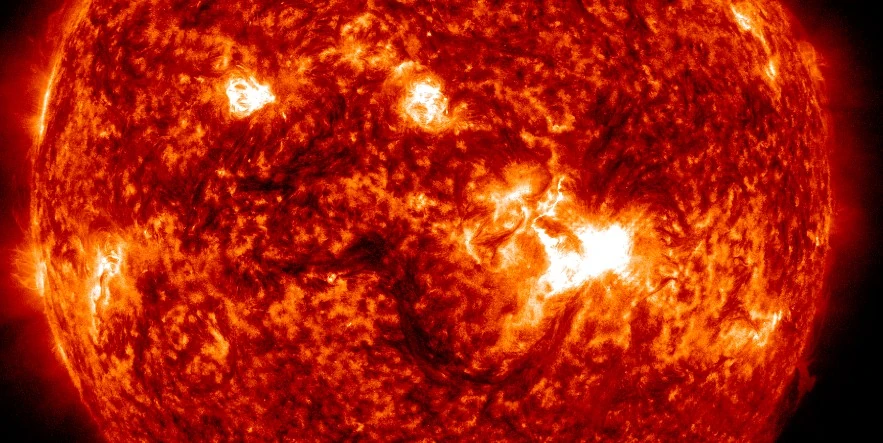
A moderately strong M6.5 solar flare erupted from Active Region 3576 at 03:48 UTC on February 12, 2024. The event started at 03:23 and ended at 03:53 UTC.
There were no radio signatures detected that would suggest a coronal mass ejection (CME) was produced.
Radio frequencies were forecast to be most degraded over SE Asia and Australia at the time of the flare.
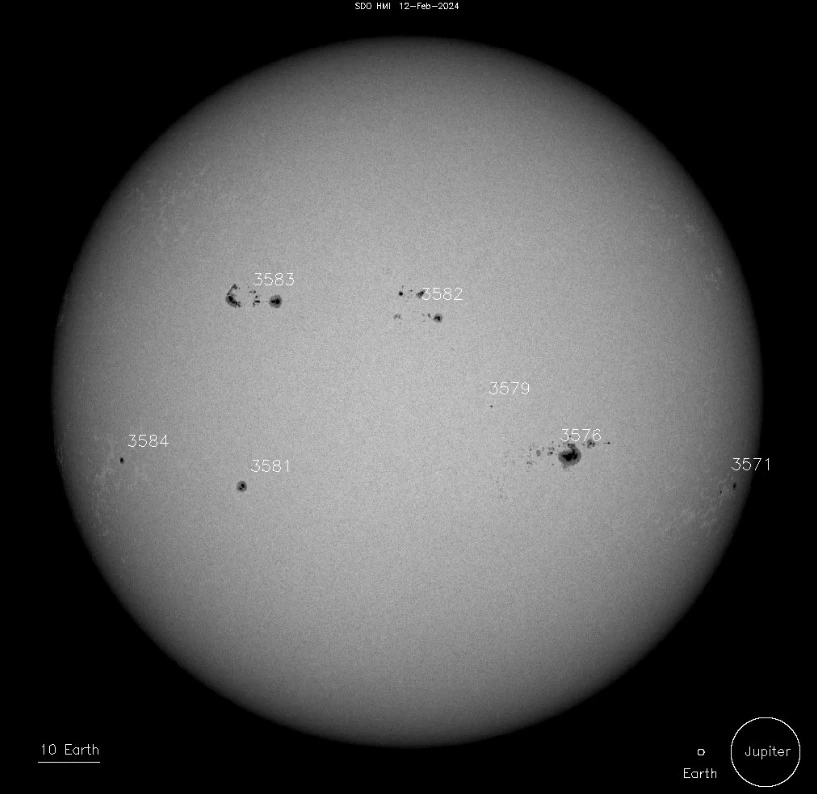
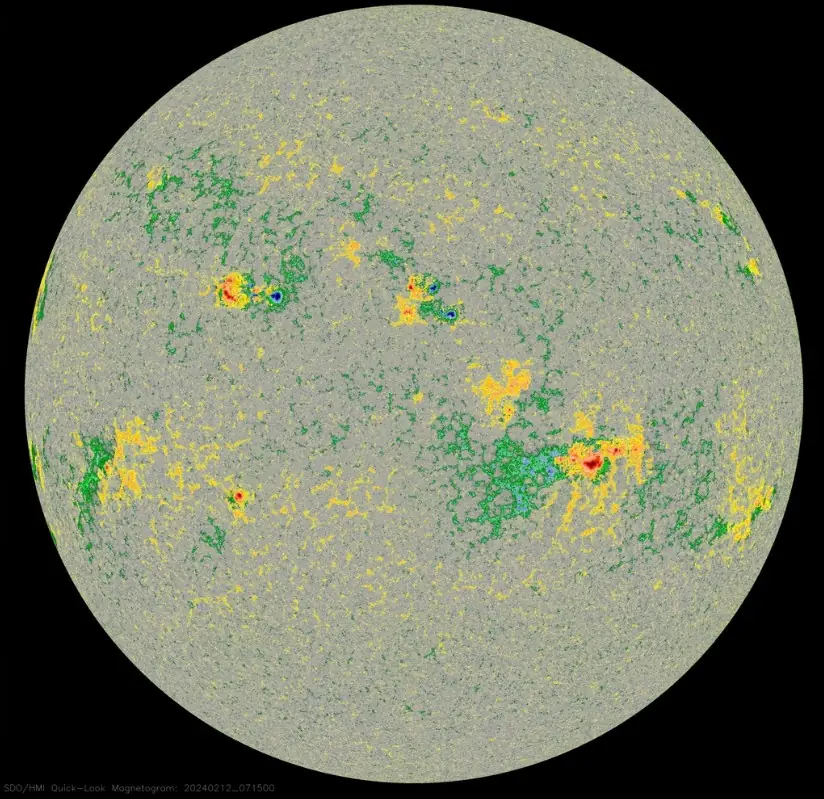
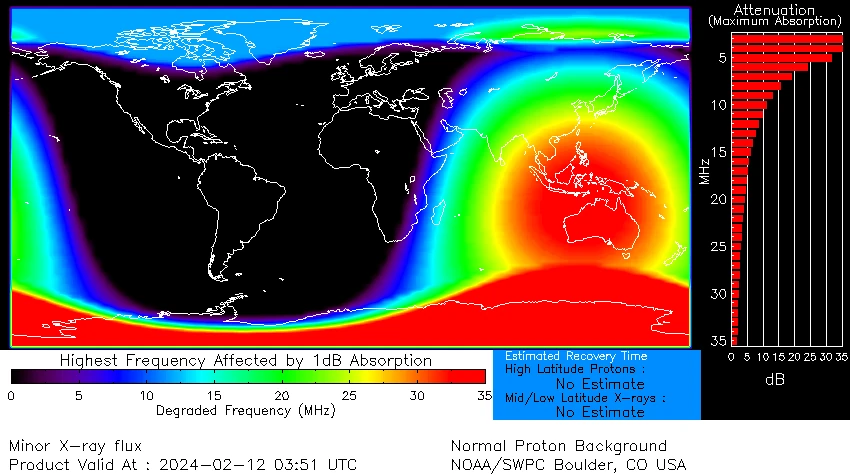
The event follows M9.0 at 23:07 UTC on February 10, also from AR 3576. While today’s flare might not have produced CME, the February 10th M9.0 appeared to produce two of them.
The first was a full halo that could be fully seen at 00:00 UTC on February 11. A slower, narrow CME appeared at the same time with the bulk of the ejecta off the NNE limb. GOES SUVI 304 imagery appears to show the presence of the two CMEs and modeling indicated a likely arrival early on February 13.
Solar activity reached moderate levels in 24 hours to 00:30 UTC today due to an M1 flare at 22:45 UTC on February 11 from a region just beyond the NE limb. Regions 3576 (S16W23, Fkc/beta-gamma-delta), 3582 (N06E01, Cao/beta), and 3583 (N09E29, Dso/beta) were responsible only for C-class flaring.
Slight decay occurred in the trailing spots of Region 3576 whereas Regions 3582 and 3583 showed growth and development. Other activity included an approximate 15-degree filament eruption centered near N28E19 that began at 06:40 UTC on February 11. A possible associated CME was observed off the NE limb at 18:12 UTC on February 11. Further analysis will be conducted as imagery becomes available, SWPC forecasters said.
Solar activity is likely to reach moderate levels with a slight chance for X-class flares on February 12 to 14.
The S2 – Moderate solar radiation storm that began at 18:15 UTC following the X3.3 flare on February 9, reached a peak flux of 187 pfu at 23:55 UTC on February 09, and ended at 03:55 UTC on February 11. Below S1 levels were observed since around 18:00 UTC yesterday.
There is a chance for further S1 – Minor solar radiation storm enhancements due to the flare potential of Region 3576 as well as possible shock enhancements from multiple inbound CMEs. The greater than 2 MeV electron flux is expected to be at normal moderate levels through February 14.
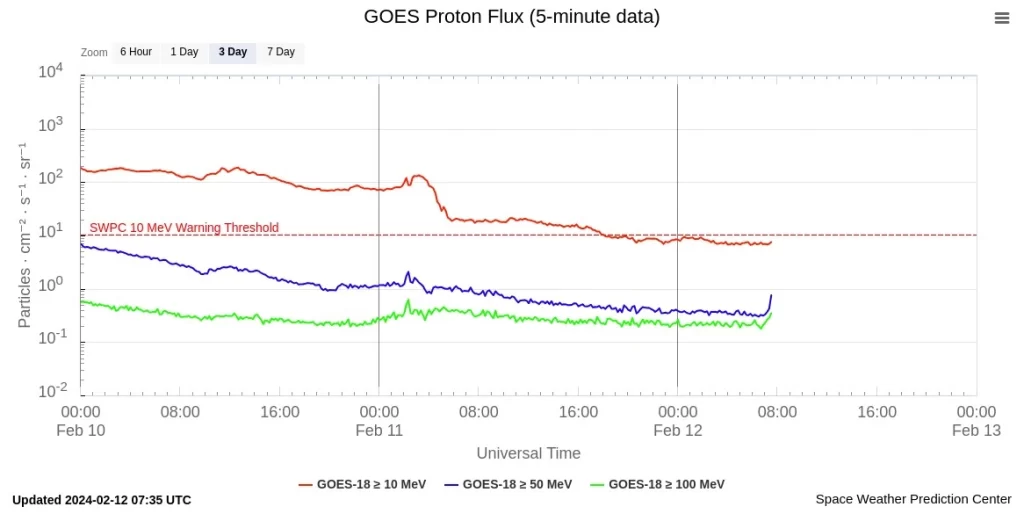
Solar wind parameters indicated the arrival of a CME, possibly a glancing blow related to the X3.3 flare on February 9. At 01:21 UTC on February 11, an interplanetary shock was observed in solar wind data. Wind speeds increased from approximately 350 km/s to 439 km/s, eventually reaching 634 km/s by 14:10 UTC. Total field increased from 4 nT to 19 nT initially, while the Bz component indicated a mostly negative trend to a low of -15 nT.
A geomagnetic sudden impulse was observed at Earth with a 40 nT deviation (Boulder Magnetometer) at 02:11 UTC yesterday. The total field decreased to under 10 nT by 05:34 UTC and remained in the 6-8 nT range through 00:30 UTC today.
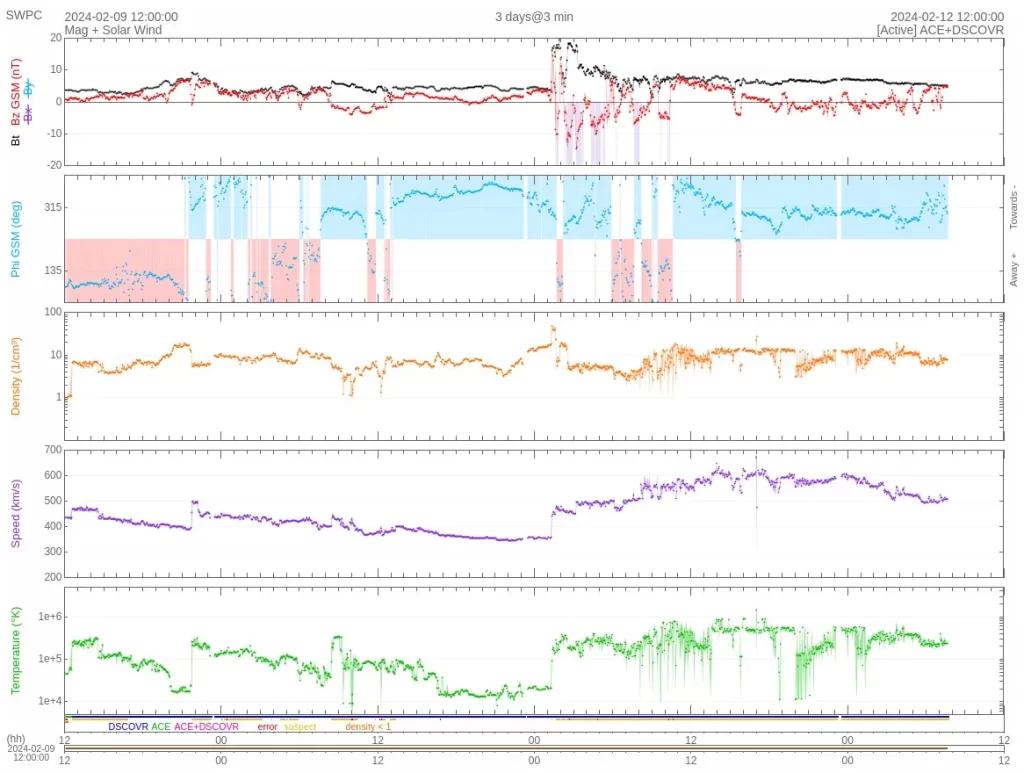
Looking ahead, a combination of the February 8 and 10 CMEs is expected to cause further enhancements in the solar wind beginning mid to late on February 12 and continuing through February 14.
The geomagnetic field was at quiet to active levels over the past 24 hours. Enhancements from the February 8 and 10 CMEs are expected to begin mid to late on February 12 through early on February 13. Unsettled to G1 – Minor storming is likely on February 12, increasing to active to G2 – Moderate storming on February 13. Unsettled to G1 – Minor conditions are expected on February 14 as CME activity persists.
References:
1 Forecast Discussion – Issued: 2024 Feb 12 0030 UTC – Prepared by the U.S. Dept. of Commerce, NOAA, Space Weather Prediction Center
Featured image credit: NASA/SDO AIA/304. Acquired at 03:47 UTC on February 12, 2024

Commenting rules and guidelines
We value the thoughts and opinions of our readers and welcome healthy discussions on our website. In order to maintain a respectful and positive community, we ask that all commenters follow these rules.